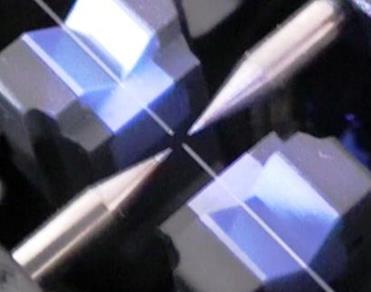-

- Sopto Home
-

- Special Topic
-

- Fiber Optics knowledge
-

- How to Fusion Splice a Fiber Optic Cable
Fiber Optics knowledge
- Maintained Methods of Fusion Splicer Parts
- How to Use the Fiber Optic Cleaver?
- What are Fixed Attenuators & Variable Attenuators?
- Deployable Fiber Optic Systems for Harsh Mining Environments
- Developing Miniature Fiber Optic Cable Has Become the Trend
- Fiber Optic Cleaning Procedures
- 6 Steps to Selecting a Fiber Optic Cable
- Signal Attenuation Introduction
- How Fiber Transmission Works?
SOPTO Special Topic
Certificate



Guarantee
Except products belongs to Bargain Shop section, all products are warranted by SOPTO only to purchasers for resale or for use in business or original equipment manufacturer, against defects in workmanship or materials under normal use (consumables, normal tear and wear excluded) for one year after date of purchase from SOPTO, unless otherwise stated...
Return Policies
Defective products will be accepted for exchange, at our discretion, within 14 days from receipt. Buyer might be requested to return the defective products to SOPTO for verification or authorized service location, as SOPTO designated, shipping costs prepaid. .....
Applications
Fiber Optis can be used in so many fields:
Data Storage Equipment
Interconnects,Networking
Gigabit Ethernet
FTTx, HDTV,CATV
Aerospace & Avionics
Data Transfer Tests
Network Equipment
Broadcast Automotive
Electronics,Sensing
Oil & Gas, Imaging
Outside Plant,Central Office
Harsh Environment
Data Transmission
Illumination,Institutions
Ship to Shore,Education
Simulation,Military,Space
Unmanned Aerial Vehicles
Semiconductor Equipment
Diagnostics & Troubleshooting
Premise Networks Carrier Networks
Independent Telecommunication Providers
SOPTO Products
- Fiber Optic Transceiver Module
- High Speed Cable
- Fiber Optical Cable
- Fiber Optical Patch Cords
- Splitter CWDM DWDM
- PON Solution
- FTTH Box ODF Closure
- PCI-E Network Card
- Network Cables
- Fiber Optical Adapter
- Fiber Optical Attenuator
- Fiber Media Converter
- PDH Multiplexers
- Protocol Converter
- Digital Video Multiplexer
- Fiber Optical Tools
- Compatible
Performance Feature
Fiber Optics knowledge
Recommended


How to Fusion Splice a Fiber Optic Cable
Fiber optic cables provide a reliable and fast method of data transfer. However, it's simply impossible to make a single fiber long enough to match the length of cable necessary for most networks. This is where splicing the fibers comes into play. Fusion splicing your fiber optic cables will give you the length you need. The process isn't difficult with the appropriate equipment.
Instructions Preparation
- Take off the outside sheath of the fiber optic cable with the rotary stripper.
- Cut the aramid strength member with the ceramic scissors.
- Strip away the buffer layer from the fiber with fiber strippers---you want to get down to about 35 mm.
- Wipe the end of the prepared fiber tip with isopropyl alcohol. Do NOT touch the end of the fiber with your bare hands, since the oil on your hands will attract contaminants like dirt and dust that will affect the refraction index of the cable.

Sopto fiber optic cable fusion splice tools
Cleaving
- Place the prepared fiber into the groove on the cleaving machine.
- Clamp the cables in place in the cleaving machine.
- Close the cleaving machine lid and press the cleaving lever to complete the cleaving process.
Splicing and Finishing
- Put two prepared cable tips into the splicing machine.
- Press start on the splicing machine---it will tell you when the process is complete.
- Take the spliced fibers out of the splicing machine and put on the heat shrink protector (tube) over the joint where the fibers are spliced.
- Put the spliced fibers (with protector tube) into the heat shrink oven and allow the oven to shrink the tube around the splice point.
For more high quality and low cost fiber optics, please contact SOPTO.
Related Knowledge:
How does a fusion splicer work?
How to Strip and Clean Fiber-Optic Cable?
What is Optical Fiber Composite Low-Voltage Cable?





